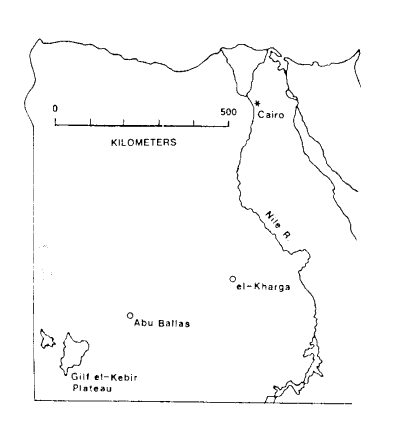 |
Science Frontiers ONLINE No. 126: Nov-Dec 1999 |
|
|
Flotsam On The Great Sand Sea
One of the strangest mysteries nestled among the giant dunes of the Egyptian Sahara was not recognized by modern scientists until 1932. In December of that year, P. Clayton, a surveyor for the Egyptian Geological Survey, was driving among the dunes near the Saad Plateau when he heard his tires crunch on something that wasn't sand. It turned out to be large pieces of marvelously clear yellow-green glass -- not just any glass but ultra-pure glass, 98% silica. As often the case, Clayton was not the first to come across the now-famous Libyan Desert Glass or LDG. Prehistoric humans had made knives and other sharp-edged tools from it; the ancient Egyptians had carved a scarab from LDG and deposited it in Tutankhamen's tomb. But Clayton and the ancients did not recognize the scientific implications of their discovery.
LDG is the purest natural silica glass ever found. Over a thousand tons of it are strewn across hundreds of kilometers of bleak desert. Some of the chunks weigh 26 kilograms, but most LDG exists in smaller, angular pieces looking like shards left when a giant green bottle was smashed by colossal forces.
Pure as it is, LDG does contain tiny bubbles, white wisps, and inky black swirls. The whitish inclusions consist of refractory minerals, such as cristobalite. The ink-like swirls, though, are rich in iridium, which is diagnostic of an extraterrestrial impact -- meteorite or comet. The iridium leads to the heart of the LDG problem: Where did this immense amount of widely dispersed glass shards come from? Was it really created during the searing, sand-melting impact of a cosmic projectile? This is how today's catastrophists would have it?
At least three "minor" problems bedevil the accepted impact theory.
- The surface of the Great Sand Sea shows no sign of a giant crater. Neither do microwave probes deep into the sand by satellite radar.
- LDG seems too pure to be derived from a messy cosmic collision. Known impact craters, such as that at Wabar in Saudi Arabia, are littered with bits of iron and other meteorite debris. Not so at the LDG sites.
- LDG is concentrated in two areas. One is oval-shaped; the other is a circular ring 6 kilometers wide and 21 kilometers in diameter. The ring's wide center is devoid of LDG.
Could there have been a "soft" projectile impact; that is the detonation of a meteorite, perhaps 30 meters in diameter, 10 kilometers or so above the Great Sand Sea? The searing blast of hot air might have melted the sand beneath. Such a craterless impact is thought to have occurred in the 1908 Tunguska Event in Siberia. Another theory has a meteorite glancing off the desert surface leaving a glassy crust and a shallow crater that was soon filled in. But there are two known areas of LDG. Were there two cosmic projectiles in tandem?
As of 1999, the origin of the beautiful green LDG remains an enigma. And of course deserts are dynamic places. How much additional LDG lurks beneath all that blowing sand?
(Wright, Giles; "The Riddle of the Sands," New Scientist, p. 42, July 10, 1999.)
Comment. In Tasmania, near Mount Darwin, is strewn the so-called Darwin Glass, which may be a distant relative of the LDG. Darwin Glass, however, exists in much smaller pieces and is strewn in a splatter pattern. A potential crater is nearby. For details on these natural glasses, see ESM2 in Neglected Geological Anomalies and SF#64.
 | Libyan Desert Glass (LDG) is strewn over the shaded area. |